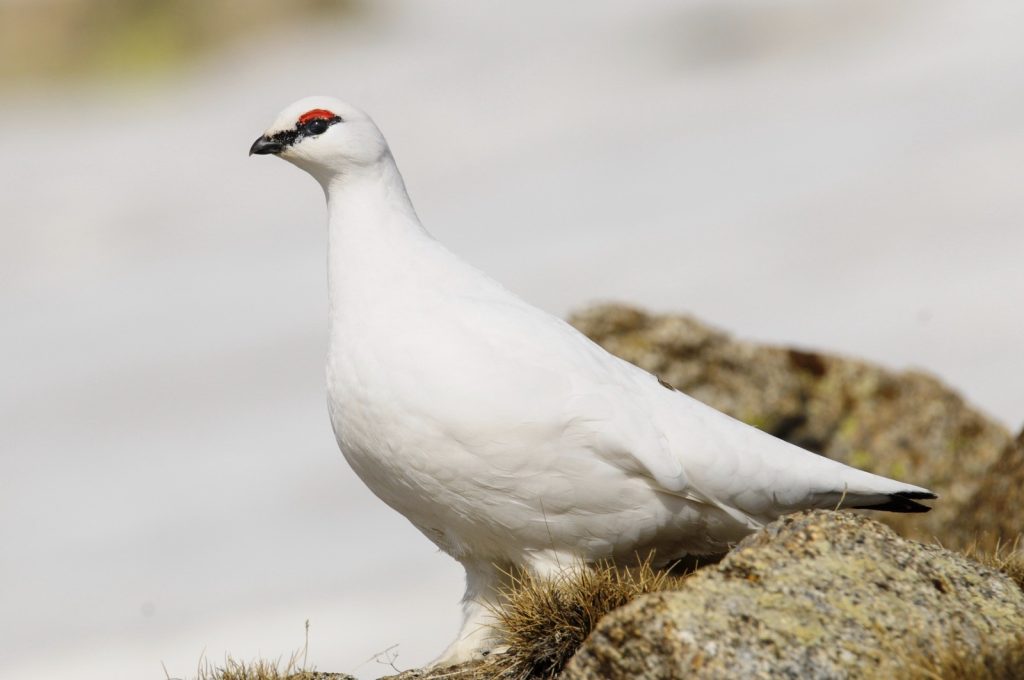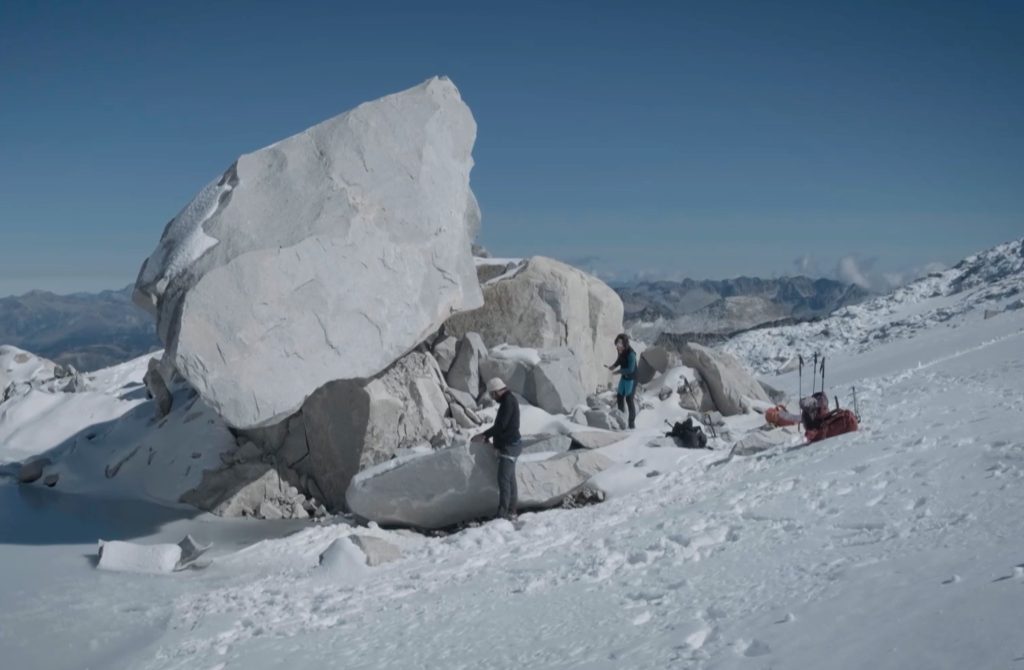The last glaciers of Southern Europe, the Pyrenees
By Jesús Revuelto (CryoPyr Research Group, https://cryopyr.csic.es/) and Borja Antolín Tomás (President of Mountain Wilderness Spain).
Between northern Spain and southern France, the Pyrenees mountain range contains the last remaining vestiges of colder times, when low temperatures and ice reigned supreme, further strengthening the rock barrier separating Spain from France. These are the southernmost glaciers in Europe and are in the most critical condition due to their rapid melting over the past 20 years caused by climate change (Vidaller et al., 2023; Izagirre et al., 2024). As in previous years, researchers from the CryoPyr Research Group of the Pyrenean Institute of Ecology (CSIC) have monitored the evolution of various glaciers in the Pyrenees in recent months. In particular, they have visited the Aneto Glacier, the Monte Perdido Glacier, the Ossoue Glacier, the Llardana Glacier, and the Infiernos Glacier.

Many of these glaciers are found on some of the most beautiful peaks in the Pyrenees, between 2,800 and 3,300 m a.s.l. These ice masses are ideal places for mountaineering and have marked the history of mountaineering in the Pyrenees. Glaciers were one of the most technical challenges faced by the first Pyrenean climbers who attempted to conquer peaks over 3,000 m, such as Monte Perdido, Vignemal or Aneto.
But what will become of these mountains and their glaciers in 20 years? Will we climb Aneto and Vignemal without ice axes and crampons?
The disappearance of glaciers will not only transform the landscape and the way we climb these mountains, but the consequences for the flora and fauna that inhabit these areas close to ice and snow will be even more significant. Although river flows in the Pyrenees are practically independent of glacial meltwater, they do depend on the melting of the snowpack. Therefore, future management of snow-related resources will have to adapt to changing climatic conditions. Species move to higher altitudes to find suitable habitats, and this “migration” has an altitudinal limit that cannot be exceeded under any circumstances. Some high-altitude bird species, such as the rock ptarmigan, are seeing their abundance altered due to climate change. Although they are not directly affected by the loss of ice, they are affected by the decrease in precipitation in the form of snow (OPCC-CTP, 2018).

As the temperature range allowing ice preservation expands, habitats suitable for flowers and animals at specific thermal thresholds also extend, and with them, these spaces shrink in size, as the mountain surface decreases as we approach the summit. Forests, which act as carbon sinks, also see their capacity compromised by the increase in droughts and pests (OPCC-CTP, 2018).
Every year, the CrioPyr research team explores these glaciers using crampons, stilts, drones, and a ground-penetrating radar to explore the state of these glaciers using geophysics and advanced image analysis techniques.

In the central Pyrenees, in the province of Huesca, stands Aneto, the highest mountain in the Pyrenees at 3,404 m, and home to the glacier of the same name. Although considered a very small glacier compared to other mountain ranges such as the Alps, it is the largest glacier in the Pyrenees. Over the past 41 years, the total area of this glacier has decreased by 64.7%, and the ice thickness has decreased, on average, by 30.5 m. The average remaining ice thickness in autumn 2022 was 11.9 m, compared to the average thicknesses of 32.9, 19.2, and 15.0 m reconstructed for 1981 and 2011 and observed in 2020, respectively. The results demonstrate the critical situation of the glacier (Vidaller et al., 2023).

The loss of glacial surface in the Pyrenees is remarkable: there were 52 glaciers in 1850, 39 in 1984 and 21 in 2020, corresponding to an area of 2,060 ha (20.6 km2) in
1850, 810 ha (8.1 km2) in 1984 and 232 ha (2.3 km2) in 2020, representing a loss of 88.8% of the glaciated area. This is a reality observed by all of us who have climbed these mountains for more than 20 years, even Kilian Jornet mentions it on his last traverse of the Pyrenees in 2023 (Into the (Un)known, 2023).
Glaciers are excellent indicators of climate variability and change because their evolution depends on the balance between snow accumulation during the cold period and the ablation of ice and snow during the warmer season. If you’d like to learn more about the state of the Pyrenees glaciers, and Aneto in particular, we invite you to watch the documentary Al paso del hielo (At the Pace of Ice) produced by the Pyrenean Institute of Ecology. We hope you enjoy it.
Let’s continue climbing these mountains to marvel at their glaciers and to protect them. To achieve this, we need science, as the CryoPyr team does. Understanding melting rates and their causes is essential to protect them, as well as to understand how glaciers further north of the Pyrenees like the Alps might behave in the near future.
References:
Izagirre, E., Revuelto, J., Vidaller, I. et al. Pyrenean glaciers are disappearing fast: state of the glaciers after the extreme mass losses in 2022 and 2023.Reg Environ Change 24, 172 (2024). https://doi.org/10.1007/s10113-024-02333-1
Vidaller, I., Izagirre, E., del Río, L. M., Alonso-González, E., Rojas-Heredia, F., Serrano, E., Moreno, A., López-Moreno, J. I. y Revuelto, J.: Evolución del glaciar Aneto (Pirineos Centrales) de 1981 a 2022: pérdida de hielo observada a partir de la fotogrametría de imágenes aéreas históricas y las técnicas de teledetección, The Cryosphere, 17, 3177–3192, https://doi.org/10.5194/tc-17-3177-2023, 2023.
Vidaller, I., Revuelto, J., Izagirre, E., Rojas-Heredia, F., Alonso-González, E., Gascoin, S., et al. (2021). Toward an ice-free mountain range: Demise of Pyrenean glaciers during 2011–2020. Geophysical Research Letters, 48, e2021GL094339. https://doi.org/10.1029/2021GL094339
OPCC-CTP (2018). El cambio climático en los Pirineos: impactos, vulnerabilidades y adaptación. Bases de conocimiento para la futura estrategia de adaptación al cambio climático en los Pirineos.
The Monte Perdido Glacier is our Glacier of the month.